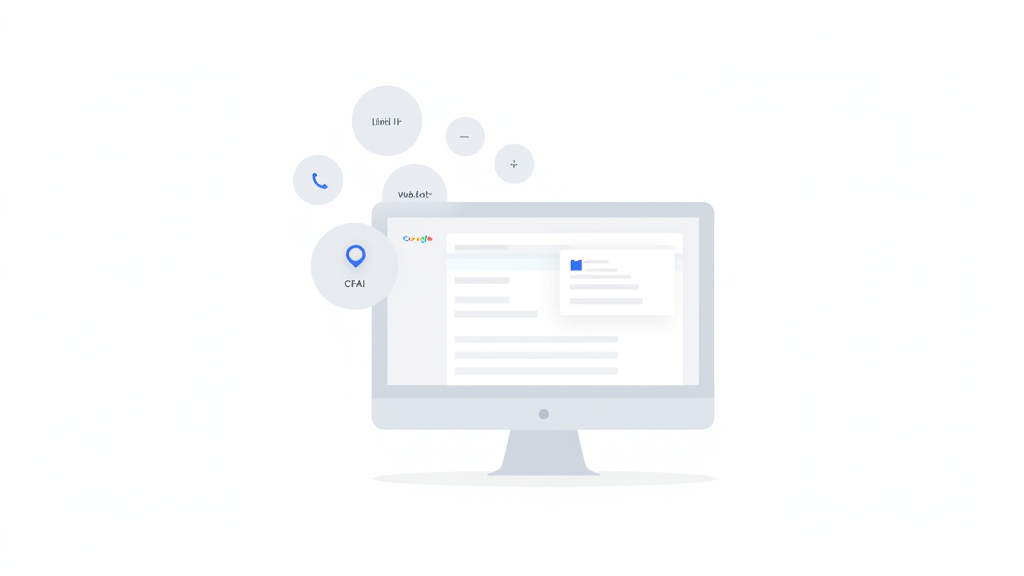If you’re combining Google Ads with affiliate marketing, it can open up some cool opportunities, but there’s definitely a lot you need to know if you want to keep your campaigns running smoothly and profitably. Paid ads can drive traffic fast, but you also deal with Google’s strict policies, competitive bidding, and the need to keep everything compliant and transparent. So, if you’re looking to up your game, here are some best practices that’ll help you get better results with Google Ads in affiliate marketing.

Understanding Google Ads Policies for Affiliates
There’s a lot to keep in mind before kicking off any ad campaigns. Google is really picky when it comes to ads that promote affiliate offers. You’ll want to get familiar with their affiliate ad policies, as ignoring them can sometimes leave your account suspended or your ads disapproved without much warning.
Here are the basics you need to know:
- Direct Linking Rules: All affiliate links in your ads or on landing pages need to point users straight to the final destination. No URL cloaking, sneaky redirects, or jumppages. Google’s bots check this pretty closely.
- Clear Disclosures: It’s super important to tell your audience when you might earn a commission. Both your ads and landing pages should make this disclosure easy to find.
- Honest Promotions: Never make claims about what the affiliate products can do that aren’t true. Avoid promising guaranteed results or specific earnings, as this is a pretty quick way to get flagged.
- Consumer Protection: All your ads have to meet legal requirements for disclosures and fair advertising practices. This always includes following local, state, and national advertising regulations wherever your audience lives.
Google updates policies regularly, so it’s a good idea to review their affiliate advertising guidelines before launching anything new.
Setting Up for Success: Campaign Preparation
Quality preparation saves you tons of headaches (and dollars) down the line. Google Ads can burn through your budget fast, so being intentional with your setup is one of the best ways to improve your chances of success from day one.
- Do Careful Product Research: Choose affiliate products or services that have real demand and a positive reputation. A few minutes on Google Trends or in product reviews can reveal a lot about what’s actually getting searched and bought.
- Build a Trustworthy Website: Your landing page should deliver genuine value, not just a sales pitch. A page that educates, answers questions, and clearly discloses your affiliate relationship tends to earn higher Quality Scores (which means cheaper clicks and better ad placement).
- Get Tracking Sorted Early: Integrate Google Analytics and Conversion Tracking right away, so you know where your conversions are really coming from. If your affiliate network supports postbacks or server to server tracking, it’s worth setting that up for more reliable data.
- Understand Your Audience: Before you spend a dime, take time to sketch out who you want to reach and why they’d care. Consider building customer personas using market research, online forums, and feedback collected from previous campaigns. The more you know your target audience, the better you can tailor messaging, select keywords, and craft landing pages that click with their interests.
Picking the Right Keywords and Ad Copy
If you want campaigns to be profitable, your keywords and ad copy need to be targeted and relevant. This is an area where a little work upfront makes a big difference once your ads go live.
- Start with Longtail Keywords: Highly specific search phrases cost less and convert better. Instead of bidding on something broad like “health supplements,” you could go for keywords like “best vegan probiotics for digestion.” You’ll compete against fewer big brands and get more targeted clicks.
- Create Honest, Focused Ads: Set the right expectations. If you’re promoting a review or a comparison, say so. Using clear calls to action like “See our top picks” or “Read full review” feels more transparent to users, and Google likes that.
- Use Keyword Insertion Carefully: Dynamic keyword insertion can help tailor your ad to the searcher, but don’t overdo it or you’ll look spammy.
- Write for Humans: Robots don’t click or buy—real people do. Make your ads conversational and relevant to what your audience is searching for. Using straightforward language often beats technical jargon or clickbait-style phrasing.
Testing multiple ads for each group (A/B testing) gives you insights into what type of messaging actually gets clicks and results in affiliate sales.
Landing Pages That Convert (and Stay Compliant)
Your landing page is where all the magic happens, and Google cares a lot about the user’s experience after clicking. If your page looks low quality or thin, you’ll notice low Quality Scores, higher costs per click, and sometimes rejected ads.
- Offer Genuine Value: Think useful guides, FAQs, detailed product comparisons, or honest pros and cons. Give people a reason to stick around rather than bounce right away.
- Be Upfront: Make affiliate disclosures easy to find. A simple note at the top or bottom of the page works.
- Keep Navigation Clean: Remove anything that distracts from your main offer, like annoying popups, autoplay videos, or too many ads on one page. A streamlined user experience almost always performs better.
- Optimize for Mobile: Many Google Ads clicks come from smartphones and tablets, so make sure your landing page loads fast and looks great on any device. Test forms, buttons, and content layout so users on mobile can take action without hurdles.
Optimizing Campaigns for Better Results
Once your campaign is running, the fun doesn’t stop. You want to keep an eye on your results, tweak your settings, and hunt for ways to improve your ROI. Here’s how I keep things moving in the right direction:
- Adjust Bids Regularly: If you see a keyword or ad group draining your budget with no results, lower your bid or pause it. When others are consistently performing, consider increasing your bids just for those.
- Test Landing Pages: Try out two or more versions of your landing page with different headlines, layouts, or calls to action. Even small changes sometimes lead to higher conversion rates.
- Watch Your Quality Score: This Google metric affects how much you pay for clicks. You can usually boost your score by making ads, keywords, and landing pages match closely.
- Use Negative Keywords: Block irrelevant searches to cut wasted ad spend. Negative keywords help filter out people looking for things outside your affiliate offer.
- Automate Where It Makes Sense: Google’s smart bidding and automation tools can help once you have enough conversions, but always double-check results before letting automation fully take the wheel.
- Check Search Term Reports: Every so often, dig into the actual search terms triggering your ads. Exclude ones that aren’t relevant, and look for new longtail phrases to add. This ongoing process can help you zig where competitors zag and trim your costs.
Common Challenges (and How to Handle Them)
Even with smart planning, you’ll run into a few bumps. Here are some issues I’ve seen plenty, and some ways to get around them:
- Ad Disapprovals: These are pretty common for affiliate campaigns. Always double-check your ad copy and destination URLs. If you get disapproved, Google will usually tell you why, so read the message and fix things fast. Try contacting support if you don’t understand a rejection.
- High Cost Per Click: Big niches like finance, health, or software are loaded with competition. Focusing on more niche, longtail keywords helps cut costs and target people more ready to buy.
- Tracking Issues: Affiliate links sometimes don’t register conversions right, especially if networks use redirects. Ask your affiliate manager about better tracking options or use third party tools to double-check numbers.
- Account Suspension: This sounds scary, and it is if you rely on Google Ads. Keep everything above board, and always have backup traffic sources, like SEO, email, or social, just in case.
- Quality Score Drops: Sometimes you’ll notice your scores drop suddenly after an update or change. Go through your ads and landing pages again, making sure you’re providing value and matching keywords throughout. Clean design and real information always help.
Bonus Tips for Experienced Marketers
Once you’re comfortable with the basics and want to take things further, there are a few more strategies worth exploring:
- Leverage Remarketing: Running display ads to people who already visited your site gives your conversion rates a boost, since they’re already interested in your content.
- Review Device and Location Data: Some affiliate offers do way better on mobile or perform in certain locations. Adjust your bids or ad schedule to focus your budget on those winners.
- Try Ad Extensions: Sitelink, callout, and structured snippet extensions give people more chances to click and help your ad stand out. These often lead to cheaper clicks and better conversion rates.
- Track Lifetime Value: For offers where repeat purchases or subscriptions are possible, note that your cost per acquisition might be higher, but it could be worth it in the long run. Working with affiliate programs that support recurring commissions is another way to make your Google Ads dollars go farther.
Frequently Asked Questions
Here are a few questions that pop up a lot when talking about affiliate marketing with Google Ads:
Can I direct link to affiliate offers with Google Ads?
Most of the time, Google prefers you to have your own landing page. Direct linking is technically possible, but it almost always causes ad disapprovals or super low Quality Scores, so I’d always recommend running traffic to your own site first.
How much should I spend to get started?
Even with low competition keywords, you’ll want a minimum daily budget of $10-$20 to gather data. Some effort with A/B testing landing pages and ads helps you stretch that budget as far as possible.
Is it really possible to scale affiliate campaigns with Google Ads?
Yes, but it takes time. The most successful affiliates constantly optimize, expand into new offers, and keep up with policy changes. Always have a backup plan in case an offer dries up or Google tweaks its rules again.
How important is ad relevance?
Ad relevance directly impacts your Quality Score, which affects how much you pay and how often your ads show. Make sure your ad text lines up with your keywords and the content on your landing page for the best results.
Final Thoughts
Getting the most from Google Ads in affiliate marketing comes down to staying compliant, being transparent, and always testing and improving. Do careful research, focus on user experience, and keep up with Google’s constant changes. With the right approach and consistent effort, affiliate marketers can find long-term success using Google Ads as a core traffic source.
